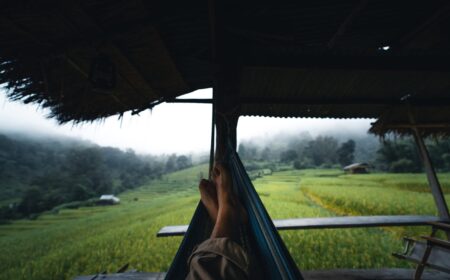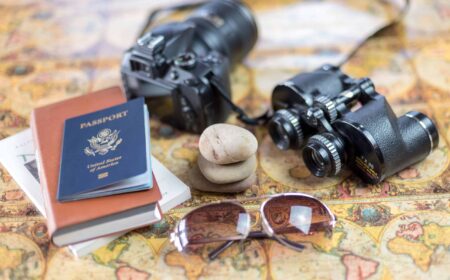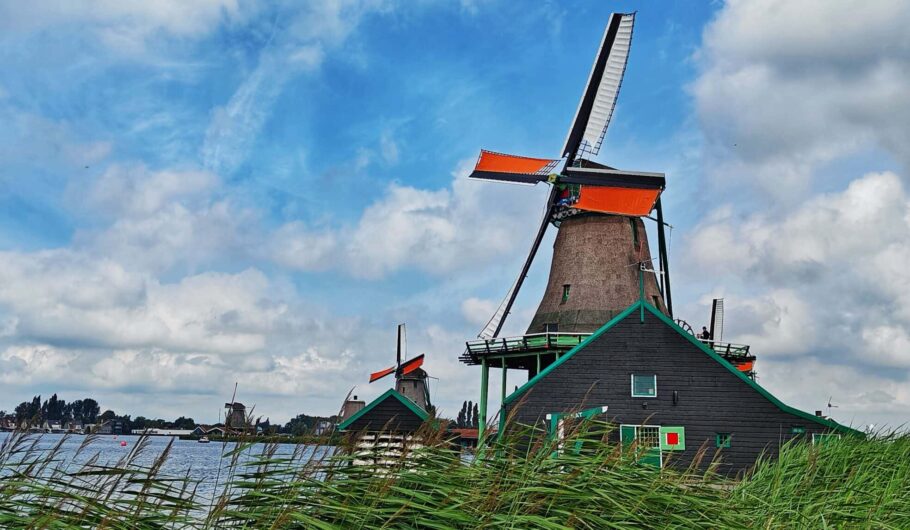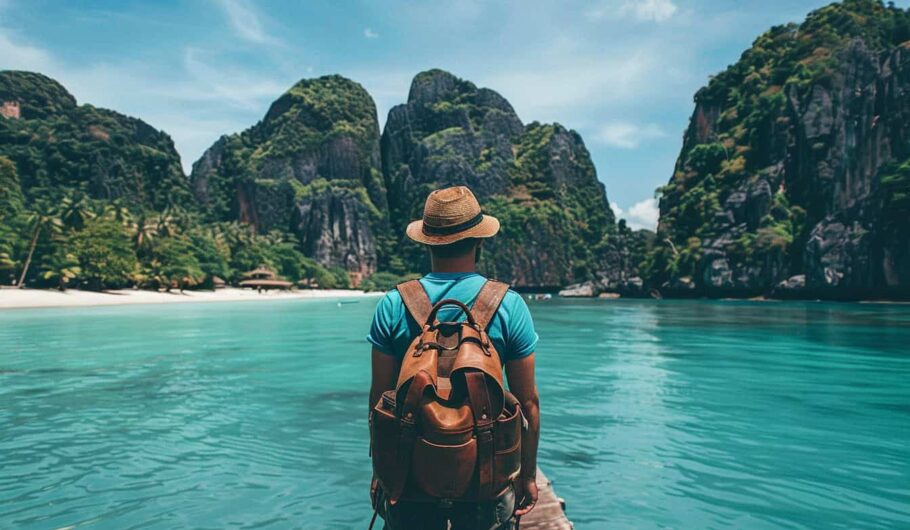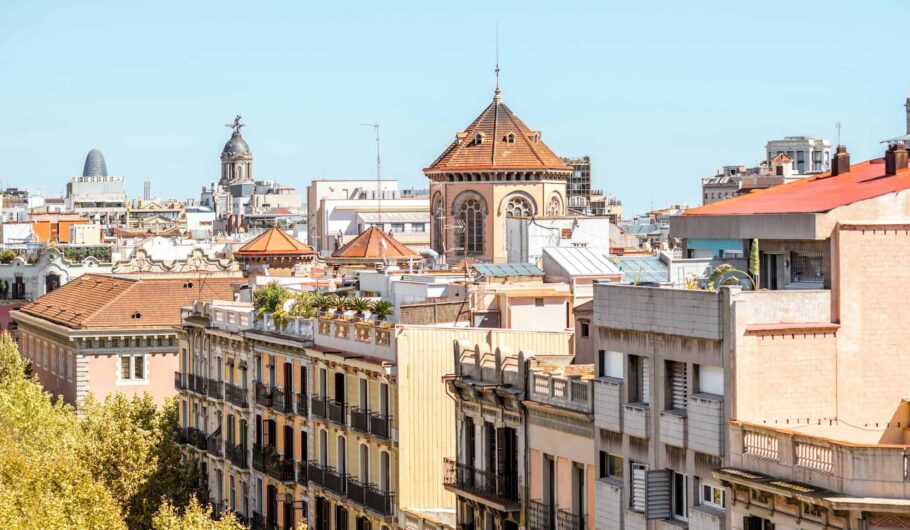20 Essential Tips for Ethical and Sustainable Travel
Welcome to your ultimate guide for eco-friendly travel! As we venture out into the world, it’s easy to get swept away by the thrill of exploration and forget about the impact we leave behind. But fear not, fellow wanderer! This booklet is here to help you navigate your adventures while keeping Mother Earth and local communities in mind.
In today’s fast-paced tourism industry, making conscious choices about where we stay, what we buy, and how we engage with the places we visit is more important than ever. From selecting eco-friendly accommodations to supporting local businesses and minimizing waste, every small action adds up to a significant difference.
Think of this guide as your travel buddy who’s not only excited about discovering new destinations but also eager to make the world a better place. So grab your reusable water bottle, pack your sense of adventure, and let’s dive into the wonderful world of sustainable travel practices that will leave a positive impact on the planet—and maybe even earn you some bragging rights among your fellow travelers! After all, who doesn’t love a good travel story with a side of environmental heroism?
Choose Eco-Friendly Accommodations
When planning your travels, one of the best ways to make a positive impact on the environment is by choosing eco-friendly accommodations. Many hotels and lodges have certifications that indicate their commitment to environmentally friendly practices, such as Green Key, LEED (Leadership in Energy and Environmental Design), and EarthCheck. When booking, check if the property has any of these certifications, as they often reflect a genuine dedication to reducing their ecological footprint. Additionally, consider accommodations that engage with local communities and support local economies by sourcing food from local farms or employing local staff. This not only minimizes transportation emissions but also contributes to the economic well-being of the area you’re visiting.
Many sustainable hotels implement energy-efficient systems like solar panels, LED lighting, and energy-efficient appliances. Look for accommodations that have water-saving fixtures, such as low-flow showers and toilets, which can significantly reduce resource consumption during your stay. It’s also important to consider places that have robust waste management practices, such as recycling programs, composting organic waste, and minimizing single-use plastics. Hotels that encourage you to reuse towels and linens demonstrate a commitment to reducing waste while making your stay more environmentally friendly.
Choosing eco-friendly accommodations can enhance your travel experience and positively impact the environment. Some lodges promote sustainable transportation options, including proximity to public transport, bike rentals, or electric vehicle charging stations. Reading reviews from previous guests can provide valuable insight into whether a hotel truly lives up to its eco-friendly claims. By prioritizing these choices during your travels, you contribute to a more sustainable tourism industry and help preserve natural resources for future generations.
Support Local Businesses
Supporting local businesses is crucial for fostering a healthy and vibrant community. When you choose to shop at local stores, dine at neighborhood restaurants, or utilize services from nearby providers, you contribute to the local economy in several meaningful ways. Local businesses create jobs for residents, helping to reduce unemployment and increase the overall economic stability of the area. When you spend money at a local establishment, a significant portion of that money stays within the community, leading to more investment in local infrastructure, schools, and public services.
Local businesses often provide unique products and services that reflect the culture and character of the community. Unlike large chains, these businesses tend to offer specialized goods that you may not find elsewhere, enhancing the shopping experience and allowing customers to discover new and interesting items. Supporting these businesses helps strengthen community ties, as local owners are often more invested in their neighborhoods and likely to participate in community events or support charitable causes. This creates a sense of belonging and encourages residents to engage more actively with their surroundings.
Shopping locally can also be more environmentally friendly. Local businesses typically have a smaller carbon footprint compared to larger corporations, as they often source their products from nearby suppliers, reducing transportation emissions and contributing to sustainability efforts within the community. Additionally, one of the advantages of local businesses is the personalized service they can offer; owners and employees often build relationships with their customers, providing tailored recommendations and attentive service that you might not receive in larger stores. Supporting local businesses is an investment in your community’s future that benefits everyone involved.
Minimize Waste:
When traveling, one effective way to minimize waste is to pack thoughtfully and choose items that are reusable. Instead of single-use toiletries, consider bringing refillable containers for shampoo, conditioner, and body wash. Opt for a reusable water bottle that you can fill up rather than buying bottled water. Additionally, packing a cloth bag or tote can help you avoid plastic bags for shopping or carrying items during your trip.
Another important aspect is to be mindful of your food choices while traveling. Try to support local markets and restaurants that prioritize sustainable practices. Bringing your own snacks in reusable containers can help reduce waste from packaging. If you’re flying, consider bringing a homemade meal instead of purchasing food at the airport, which often comes with excessive packaging. This not only cuts down on waste but can also save money.
Lastly, be conscious of your transportation methods. Whenever possible, choose public transit, biking, or walking over renting a car or taking taxis. Not only does this reduce your carbon footprint, but it also helps minimize waste associated with fuel consumption and vehicle maintenance. By making these small changes in your travel habits, you can significantly reduce waste and contribute to a more sustainable traveling experience.
Use Public Transportation:
Using public transit is an effective way to reduce one’s carbon footprint and contribute to a more sustainable environment. Buses, trains, and subways can carry many passengers at once, which means fewer individual vehicles on the road. This not only decreases greenhouse gas emissions but also helps to alleviate traffic congestion, leading to a smoother flow of movement in urban areas. By choosing public transportation, individuals play a role in minimizing air pollution and conserving energy resources.
Moreover, public transit systems often promote the use of renewable energy sources. Many cities are investing in electric buses and trains, which further lower emissions compared to traditional fossil fuel-powered vehicles. Additionally, public transit encourages walking and cycling as people often need to travel to and from transit stations. This active lifestyle not only benefits personal health but also supports the local economy through increased foot traffic in neighborhoods.
Finally, utilizing public transportation fosters a sense of community and social interaction. Riders from diverse backgrounds come together, sharing their experiences and cultures. This can lead to a greater understanding and appreciation of one’s surroundings while helping to build stronger community ties. By choosing public transit, individuals are not just making an eco-friendly choice; they are also enriching their social experiences and supporting local initiatives aimed at sustainability.
Respect Wildlife
When traveling, it’s essential to respect local wildlife as part of an eco-friendly approach. Observing animals in their natural habitats can be a unique and rewarding experience, but it also comes with the responsibility to minimize our impact on their environments. This includes maintaining a safe distance, avoiding feeding or touching wildlife, and refraining from disturbing their habitats. By respecting their space, travelers can help ensure that these creatures remain unaltered by human interaction, preserving the delicate balance of their ecosystems.
Additionally, choosing activities that promote wildlife conservation can enhance your travel experience. Many destinations offer guided tours led by knowledgeable locals who prioritize ethical wildlife viewing practices. Participating in responsible tours not only supports the local economy but also fosters a deeper understanding of the region’s biodiversity. It’s important to research and select operators that adhere to ethical guidelines, ensuring that their practices contribute positively to wildlife conservation efforts.
Lastly, educating oneself about local wildlife and their habitats can lead to more mindful travel choices. Understanding the significance of various species and the challenges they face can inspire travelers to advocate for their protection. Engaging in discussions with local conservation groups or participating in volunteer opportunities can further enhance the connection between travelers and the natural world. By incorporating these practices into your travel plans, you contribute to a more sustainable future for wildlife and their environments.
Be Mindful of Water Usage
Being an eco-friendly traveler involves making conscious choices, especially when it comes to water usage. Water is a precious resource, and in many destinations, it can be scarce. It’s essential to be aware of your consumption habits, such as taking shorter showers, turning off the tap while brushing your teeth, and reusing towels instead of having them washed daily. These small changes can significantly reduce water waste during your travels.
When exploring natural areas or engaging in outdoor activities, travelers should also respect local ecosystems by avoiding actions that could lead to water pollution. This includes not washing dishes or bathing in rivers and lakes, using biodegradable soaps, and disposing of waste properly. By being mindful of how our actions impact water sources, travelers can help preserve the beauty and health of the environments they visit.
Lastly, opting for accommodations that prioritize sustainability can further enhance your eco-friendly travel experience. Many hotels and hostels now implement water-saving measures, such as low-flow fixtures and rainwater harvesting systems. Supporting these establishments not only reduces your own water footprint but also encourages more businesses to adopt environmentally friendly practices. By being conscious of water usage in various aspects of travel, individuals can contribute to a more sustainable future for the planet.
Offset Your Carbon Footprint
Offsetting your carbon footprint while traveling is an essential practice for those who want to minimize their environmental impact. One effective way to achieve this is by investing in carbon offset programs that fund renewable energy projects, reforestation, and other initiatives aimed at reducing greenhouse gas emissions. By calculating the emissions generated from your travel—whether by air, car, or other means—you can determine how much you need to invest to offset those emissions. Many airlines and travel companies now offer options to add a carbon offset fee when booking flights or accommodations, making it easier for travelers to contribute.
In addition to purchasing carbon offsets, travelers can adopt more sustainable habits. Choosing direct flights can significantly reduce emissions compared to multiple layovers. Opting for public transportation, biking, or walking instead of renting a car further lowers your carbon output. Staying in eco-friendly accommodations that implement sustainable practices, such as energy efficiency and waste reduction, also contributes positively to the environment. Engaging with local communities through responsible tourism practices ensures that your travels benefit the places you visit, rather than harming them.
Lastly, being mindful of your consumption during travel plays a crucial role in offsetting your carbon footprint. Reducing waste by using reusable water bottles, shopping bags, and containers can significantly lessen the environmental burden associated with travel. Additionally, supporting local businesses and prioritizing experiences that have a lower environmental impact fosters a more sustainable travel experience. By combining these approaches—investing in carbon offsets, making sustainable choices, and promoting local economies—you can enjoy your travels while being kind to the planet.
Educate Yourself About the Destination:
When traveling, it’s essential to educate yourself about the culture, customs, and environmental issues of your destination. This knowledge can transform an ordinary trip into an unforgettable adventure. Imagine arriving in Japan and accidentally sticking your chopsticks upright in a bowl of rice—talk about a culinary catastrophe! Understanding local customs can help you navigate social norms and even impress locals with your respect for their traditions. A little research goes a long way, and it’s a surefire way to avoid those awkward moments that make for great stories later.
In addition to customs, being aware of the environmental challenges faced by popular tourist destinations can inspire you to travel more responsibly. From over-tourism affecting natural habitats to the impact of waste on local communities, understanding these issues allows you to make informed choices while exploring. Simple actions, like carrying a reusable water bottle, supporting eco-friendly businesses, or choosing to walk or bike instead of driving, can make a real difference. Who knew that being a responsible traveler could also give you bragging rights at your next dinner party?
Lastly, learning a few phrases in the local language can create connections and enhance your travel experience. Even if you butcher the pronunciation, locals often appreciate the effort and are more likely to share their favorite spots or hidden gems with you. Plus, there’s something delightful about trying to order dinner in a language you barely comprehend—it’s like a real-life game of charades! So dive into the customs, environmental issues, and language of each destination; not only will your passport thank you for the enriched experiences, but you’ll also collect stories that will have everyone laughing for years to come!
Travel Off-Peak:
Traveling during off-peak seasons offers a unique opportunity to experience destinations in a more authentic and sustainable way. When you choose to visit popular places outside of their peak tourist times, you not only avoid the crowds but also contribute to the local economy in a more balanced manner. Local businesses often struggle during off-peak times, so your presence can make a real difference. Imagine strolling through the serene streets of a city that’s usually bustling with tourists, enjoying the sights and sounds without the chaos—it’s like having a VIP experience without the price tag!
Additionally, traveling off-peak allows for a more sustainable approach to tourism. The lower number of visitors means less strain on local resources, such as water and energy, which are often stretched thin during busy seasons. This reduction in demand helps preserve the environment and maintain the quality of life for residents. Plus, with fewer tourists around, you’ll likely find that wildlife and natural attractions are more accessible and enjoyable. Picture yourself hiking through a national park, soaking in the beauty of nature without the usual hustle and bustle of fellow hikers crowding the trails.
Lastly, off-peak travel encourages deeper cultural interactions and connections. With fewer tourists around, locals have more time to engage with visitors, share their stories, and provide insights into their way of life. You might find yourself having a genuine conversation with a local shop owner or being invited to a community event that you’d never experience during peak season. These connections can enrich your travel experience and lead to unforgettable memories. So, by choosing to travel off-peak, not only do you enjoy a more peaceful journey, but you also play a part in promoting sustainable tourism that benefits both travelers and the communities they visit.
Participate in Conservation Efforts:
Participating in conservation efforts while traveling is an excellent way to give back to the places you visit and help protect their natural beauty and biodiversity. Many destinations offer volunteer programs or eco-tourism initiatives that allow travelers to engage directly in conservation work, whether it’s helping to restore habitats, participating in wildlife monitoring, or assisting with community education programs. Imagine spending a day planting trees in a rainforest or helping to clean up a beach—it not only feels rewarding but also provides a unique opportunity to connect with the local environment and its inhabitants in a meaningful way.
Moreover, getting involved in conservation efforts can deepen your understanding of the environmental challenges that different regions face. By working alongside local conservationists and communities, you gain firsthand insight into the delicate balance of ecosystems and the importance of protecting them. This experience can be both eye-opening and humbling, as you learn about the impacts of climate change, habitat loss, and pollution while actively contributing to solutions. Plus, you’ll likely meet like-minded travelers who share your passion for sustainability, creating friendships that can last long after the trip is over.
Finally, participating in these initiatives can enhance your travel experience by adding a layer of purpose to your adventures. Instead of merely sightseeing, you become a part of something larger—helping to preserve the very landscapes and wildlife that drew you to the destination in the first place. This sense of purpose can create lasting memories and stories that go beyond typical travel experiences. So, the next time you’re planning a trip, consider incorporating conservation efforts into your itinerary; not only will you help protect our planet, but you’ll also return home with a richer understanding of the places you’ve visited.
Leave No Trace:
Adopting the “Leave No Trace” principle while traveling is essential for preserving the natural beauty of our planet and minimizing our impact on the environment. This philosophy encourages travelers to be mindful of their actions, ensuring that they do not disturb wildlife, damage ecosystems, or leave behind litter. Simple practices, like sticking to marked trails, packing out all trash, and avoiding the collection of natural items such as rocks or plants, can make a significant difference in maintaining the integrity of the places we love to explore. Imagine hiking through a pristine forest and knowing that your efforts helped keep it that way for future visitors to enjoy!
In addition to protecting the environment, following Leave No Trace guidelines fosters a deeper connection with nature. When you consciously consider your impact, you become more attuned to the beauty around you. This mindfulness can lead to greater appreciation for the landscapes you encounter, whether it’s the sound of rustling leaves, the sight of wildlife in its natural habitat, or the serenity of a secluded beach. By respecting these spaces and their inhabitants, you contribute to their preservation and help ensure that future generations can experience the same joy and wonder that you did.
Moreover, practicing Leave No Trace can inspire others to do the same. When travelers set an example by being environmentally conscious and responsible, they encourage fellow adventurers to adopt similar practices. Sharing your experiences on social media or within your travel circles can promote awareness about the importance of protecting our planet’s natural resources. By cultivating a culture of respect and responsibility in outdoor spaces, we can collectively help safeguard these treasures for years to come. So, as you venture out into the great outdoors, remember: it’s not just about enjoying nature; it’s about ensuring it remains beautiful and unspoiled for all who come after you!
Respect Local Cultures and Traditions:
Respecting local cultures and traditions is a fundamental aspect of responsible travel that enriches your experience and fosters positive interactions with the communities you visit. Each destination has its unique customs, beliefs, and practices that shape the identity of its people. By taking the time to learn about and honor these traditions, you show appreciation for the local way of life and create a more meaningful connection with residents. For example, understanding the significance of a traditional festival or the proper etiquette when visiting sacred sites can help you navigate cultural nuances and avoid unintentional offenses.
Moreover, engaging with local cultures can offer valuable insights into their history and social dynamics. When you approach communities with respect and an open mind, you may find yourself welcomed into their world, whether it’s through shared meals, participation in traditional ceremonies, or simply conversations with locals. These interactions can lead to unforgettable experiences that broaden your perspective and challenge preconceived notions. Picture yourself enjoying a home-cooked meal with a family in a remote village—these moments often become the highlights of your travels and foster a sense of mutual understanding.
Additionally, respecting local cultures helps promote sustainable tourism practices that benefit both travelers and host communities. By supporting local artisans, businesses, and cultural initiatives, you contribute to preserving their heritage and way of life. This not only empowers locals but also encourages them to share their traditions with visitors. When travelers value and engage with cultural experiences rather than seeking out generic tourist traps, it helps maintain the authenticity of the destination. So, as you embark on your adventures, remember that taking the time to respect and learn from local cultures enriches your journey while ensuring that these vibrant traditions continue to thrive for generations to come!
Choose Slow Travel:
Choosing slow travel is a transformative approach that allows you to immerse yourself more deeply in the places you visit by spending more time in fewer locations. Instead of rushing through a checklist of tourist attractions, slow travel encourages you to savor each destination, appreciating the nuances of its culture, environment, and people. By taking the time to explore a city or region thoroughly, you can discover hidden gems that aren’t found in guidebooks, such as charming local cafes, vibrant markets, or serene parks. Imagine wandering through the winding streets of an ancient town, engaging in conversations with locals, and truly experiencing the rhythm of daily life—this kind of travel creates lasting memories that far surpass the typical whirlwind itinerary.
Moreover, slow travel promotes sustainability by reducing your carbon footprint and minimizing the impact on local resources. When you stay longer in one place, you’re less likely to rely on frequent transportation, which is often a significant contributor to environmental degradation. Instead, you can explore your surroundings on foot or by bike, allowing you to appreciate the landscape in a more intimate way. This not only benefits the planet but also encourages you to engage with the local community and economy more responsibly. By supporting local businesses, such as markets or artisans, you help preserve the character of the area and contribute to its sustainability.
Finally, embracing slow travel fosters personal growth and reflection. With more time to unwind and connect with your surroundings, you can step away from the hustle and bustle of everyday life and find moments of peace and clarity. This slower pace allows for introspection and encourages you to be present in the moment, cultivating a deeper appreciation for your journey. Whether it’s enjoying a sunrise over a quiet beach or spending an afternoon learning a traditional craft from a local artisan, these experiences enrich your travels and often lead to personal insights that stay with you long after the trip ends. So next time you plan an adventure, consider slowing down; it’s not just about the places you visit, but the richness of the experiences you create along the way!
Avoid Single-Use Plastics:
Avoiding single-use plastics while traveling is a crucial step towards reducing environmental impact and promoting sustainable tourism. From plastic water bottles to disposable cutlery, these items contribute significantly to pollution and waste in our oceans and natural landscapes. As a traveler, making a conscious effort to bring reusable alternatives, such as a stainless steel water bottle or cloth bags, can greatly minimize your plastic footprint. Picture yourself sipping from your sleek water bottle filled with fresh local water instead of buying countless plastic bottles—your adventure becomes not only more eco-friendly but also more authentic as you engage with the local environment.
In addition to reducing waste, avoiding single-use plastics can enhance your travel experience by encouraging creativity and resourcefulness. Many destinations offer local markets or shops where you can purchase fresh produce or snacks without plastic packaging. By embracing this approach, you not only support local economies but also discover new flavors and culinary delights unique to the region. Imagine exploring a vibrant market, filling your reusable bag with exotic fruits and snacks, and later enjoying a picnic while soaking in the beauty of your surroundings. These experiences often lead to memorable moments that connect you to the culture in ways that pre-packaged items simply cannot.
Furthermore, your commitment to avoiding single-use plastics can inspire others to follow suit. When fellow travelers see you using reusable items, they may be motivated to adopt similar practices, creating a ripple effect that promotes environmental consciousness. Sharing your experiences on social media or within your travel circles can raise awareness about the importance of reducing plastic waste and encourage more people to consider sustainable alternatives. By prioritizing eco-friendly practices during your travels, you play an active role in protecting our planet while also enjoying richer, more meaningful experiences along the way. So as you embark on your next adventure, remember that every small action counts in the fight against plastic pollution!
Travel with Purpose:
Traveling with purpose involves seeking experiences that go beyond mere sightseeing, allowing you to engage deeply with the places you visit and contribute positively to local communities. This mindset encourages travelers to consider their motivations and the impact of their journey. Whether it’s volunteering, supporting local businesses, or participating in cultural exchanges, purposeful travel fosters a sense of responsibility and connection. Imagine spending your days helping at a community garden or working with conservation efforts—these experiences not only enrich your travels but also create lasting bonds with the people and environment around you.
Moreover, traveling with purpose often leads to personal growth and self-discovery. When you step outside your comfort zone and immerse yourself in a new culture or community, you gain valuable insights and perspectives that challenge your worldview. Engaging in meaningful activities, like learning traditional crafts from local artisans or participating in workshops that promote sustainability, can ignite new passions and inspire future endeavors. Picture yourself discovering a love for cooking while taking a local culinary class, learning to make dishes using traditional methods—these moments often leave a profound impact and can shape your life long after the journey ends.
Lastly, purposeful travel encourages a more sustainable approach to tourism that benefits both travelers and the destinations they explore. By prioritizing experiences that support local economies, protect the environment, and promote cultural exchange, you contribute to a more equitable travel industry. This shift in mindset not only helps preserve the unique character of each place but also empowers local communities to thrive. So, as you plan your next adventure, consider how you can travel with intention; by doing so, you not only enhance your own journey but also play a part in creating a more sustainable and connected world for all.
Reduce Energy Usage:
Reducing energy usage while traveling is an important step toward promoting sustainability and minimizing your carbon footprint. One of the most effective ways to achieve this is by opting for eco-friendly transportation options whenever possible. Instead of relying on rental cars or taxis, consider using public transport, biking, or walking to explore your destination. Not only do these choices lower energy consumption, but they also allow you to experience the local culture in a more authentic way. Imagine riding a bike through a charming city, discovering hidden gems and enjoying the fresh air, rather than being confined to a car or bus.
In addition to transportation, you can minimize energy usage by being mindful of your accommodations. Choose hotels or hostels that prioritize sustainability by implementing energy-saving practices, such as using solar panels, energy-efficient lighting, and water-saving fixtures. If possible, consider staying with eco-conscious hosts on platforms that promote sustainable lodging options. By supporting these establishments, you contribute to a movement that values environmental responsibility and encourages others to adopt similar practices. Even simple actions, such as turning off lights and unplugging electronics when you leave your room, can make a significant difference in reducing energy consumption during your stay.
Finally, being conscious of your energy usage extends to your daily activities and routines while traveling. Limit your reliance on air conditioning or heating by dressing appropriately for the climate and opening windows to enjoy natural ventilation. When it comes to meals, consider dining at local restaurants that source their ingredients sustainably or participate in community-supported agriculture programs. By choosing to eat locally, you not only reduce the energy associated with transporting food but also support local farmers and businesses. By integrating these practices into your travel habits, you can enjoy enriching experiences while actively contributing to energy conservation and environmental sustainability.
Educate Others:
Educating others about sustainable travel practices is an essential step in fostering a collective commitment to protecting our planet. Whether you’re sharing your experiences with friends, family, or fellow travelers, spreading awareness about the importance of responsible tourism can inspire positive change. Simple conversations can ignite interest in eco-friendly habits, such as reducing plastic usage, supporting local economies, and respecting cultural traditions. Imagine discussing your recent trip where you volunteered at a community project—your enthusiasm might encourage someone else to seek out similar opportunities on their next adventure.
Moreover, social media platforms provide a powerful avenue for sharing knowledge and experiences related to sustainable travel. By posting photos, tips, or stories that highlight eco-conscious practices, you can reach a wider audience and spark discussions about the impact of tourism on the environment and local communities. Consider creating a blog or utilizing your social media accounts to showcase the beauty of destinations while emphasizing the need for responsible travel. Your voice can serve as a catalyst for change, inspiring others to adopt sustainable habits and make more informed choices when they travel.
Additionally, consider organizing or participating in community workshops or events focused on sustainable travel. These gatherings can facilitate discussions on topics such as minimizing waste, conserving energy, and respecting local cultures. By sharing resources, experiences, and practical tips, you can empower others to embrace responsible travel practices. Collaborating with local organizations or environmental groups can further enhance these efforts and create a supportive network for like-minded individuals. Educating others not only enriches their travel experiences but also fosters a sense of shared responsibility for the preservation of our world, ensuring that future generations can enjoy its wonders just as we do today.
Be a Conscious Consumer:
Being a conscious consumer while traveling means making thoughtful choices that prioritize sustainability and ethical practices in every aspect of your journey. This approach begins with selecting accommodations and services that align with your values, such as hotels that implement eco-friendly policies, support local communities, and minimize waste. When booking your stay, look for certifications like LEED or Green Key, which indicate a commitment to sustainability. By choosing responsible businesses, you help promote a tourism industry that respects the environment and the communities it impacts, ensuring that your travels contribute positively rather than detract from the places you visit.
In addition to your accommodation choices, being a conscious consumer extends to the products you purchase during your travels. Opt for locally made goods that support artisans and small businesses instead of mass-produced items that may harm local economies. This not only helps preserve cultural heritage but also reduces the carbon footprint associated with shipping products from far away. When dining out, choose restaurants that source their ingredients locally and prioritize sustainable practices, such as using seasonal produce and humanely raised meats. By supporting businesses that prioritize ethical sourcing and environmental responsibility, you contribute to a more sustainable economy while enjoying authentic culinary experiences.
Finally, practicing conscious consumption involves being mindful of your overall impact on the environment and local communities. This means reducing waste by bringing reusable items like water bottles, shopping bags, and utensils to limit single-use plastics during your travels. Additionally, consider adopting a “leave no trace” mentality by minimizing your ecological footprint and respecting natural spaces. Engage with local cultures and traditions in a respectful manner, ensuring that your presence does not disrupt or exploit the community. By embodying the principles of conscious consumption, you not only enhance your travel experience but also advocate for a future where tourism supports rather than harms the world we explore.
Practice Responsible Photography:
Practicing responsible photography while traveling is essential to fostering respectful interactions with communities and individuals you encounter. Before snapping a photo, take a moment to consider the cultural context and the feelings of those you are photographing. In many cultures, taking pictures of people, especially in vulnerable situations, can be seen as intrusive or disrespectful. Always ask for permission before photographing individuals, particularly in intimate settings or during ceremonies. This simple gesture shows respect for their privacy and acknowledges their right to control how their image is shared with the world. By doing so, you not only enrich your own experience but also foster trust and goodwill with the people you meet.
Additionally, it’s important to be mindful of the impact that your photography may have on local communities. Some places have specific customs regarding photography, particularly in sacred or culturally significant sites. For example, flash photography may not be allowed in temples or during religious ceremonies, as it can be seen as disruptive. Before visiting such locations, take the time to research and understand the rules surrounding photography. When in doubt, look for signs or ask locals about their preferences. By respecting these guidelines, you demonstrate cultural sensitivity and help maintain the integrity of these important sites for future travelers.
Moreover, sharing your travel photos on social media or other platforms comes with a responsibility to represent the cultures and communities you encountered accurately and respectfully. Avoid perpetuating stereotypes or misrepresenting individuals and places through selective or misleading imagery. Instead, aim to tell authentic stories through your photos that highlight the beauty and complexity of different cultures. By providing context and sharing the narratives behind your images, you can contribute to a more nuanced understanding of the places you visit. Ultimately, practicing responsible photography not only enhances your travels but also promotes a culture of respect and appreciation for the diverse world we inhabit.
Stay Informed About Local Issues:
Staying informed about local issues is a vital aspect of responsible travel that enables you to engage with the communities you visit in a respectful and thoughtful manner. Before embarking on your journey, take the time to research the social, economic, and environmental challenges faced by the destination. This could include issues such as poverty, political unrest, environmental degradation, or cultural preservation. Understanding these contexts not only enriches your travel experience but also allows you to approach interactions with a greater awareness of the complexities that shape the lives of local residents. For example, knowing about ongoing environmental initiatives might inspire you to participate in local conservation efforts during your stay.
Moreover, being aware of local issues allows you to engage in meaningful conversations with community members, fostering connections that go beyond typical tourism interactions. When you discuss relevant topics with locals, they may appreciate your interest and willingness to learn, creating opportunities for deeper cultural exchanges. This approach can lead to authentic experiences, such as attending community meetings or supporting grassroots organizations that address essential issues in the area. Imagine having a heartfelt discussion with a local activist about their efforts to promote sustainable development; these interactions not only broaden your perspective but also empower you to make informed choices during your travels.
Additionally, staying informed about local issues can help you make more conscious decisions about how you spend your time and resources while traveling. By choosing to support businesses that align with ethical practices and contribute positively to the community, you can help foster economic resilience and sustainability in the areas you visit. Whether it’s dining at restaurants that source ingredients locally or purchasing souvenirs from artisans who benefit from fair trade practices, your choices can have a significant impact. Ultimately, being knowledgeable about local challenges allows you to travel with purpose and integrity, ensuring that your presence is a force for good that respects and uplifts the communities you encounter.
By incorporating these tips into your travel plans, you can significantly contribute to more sustainable tourism practices that benefit both the environment and the communities you visit. Embracing responsible behaviors, such as reducing waste by avoiding single-use plastics, supporting local businesses, and respecting cultural traditions, helps promote a travel industry that prioritizes ecological and social integrity. Engaging in meaningful activities, like volunteering or participating in conservation efforts, allows you to leave a positive impact on the places you explore. Additionally, staying informed about local issues and practicing responsible photography fosters deeper connections with communities and encourages respectful interactions. Ultimately, every conscious choice you make as a traveler not only enhances your personal experience but also supports the preservation of natural resources and cultural heritage for future generations, creating a more equitable and sustainable world for all.
[convertkit form=8110523]
Zaanse Schans: A Journey Through Windmills, Flavors, and Dutch Heritage
The blog post provides a captivating glimpse into the cultural richness and vibrant allure of Amsterdam. From exploring the iconic canal belt to immersing in Dutch art at renowned museums, the post offers a curated guide to must-see attractions and experiences….
Traveling with a Friend or Family Member: Tips for a Smooth Adventure
Traveling with a friend or family member can be an enriching experience that brings you closer together while creating lasting memories. However, it can also lead to misunderstandings if not handled with care. Here’s a more in-depth look at how to ensure your journey is enjoyable and amicable.
Before setting off on your adventure, it’s crucial to have an open and honest conversation about your expectations. This involves discussing your travel goals, budget constraints, and personal preferences. For instance, consider questions like: What are the must-see attractions for each of you? Are you both comfortable with the same level of spending on accommodations and meals? By clearly articulating your desires and concerns, you can establish a mutual understanding that paves the way for a smoother trip. Ensure that you both feel heard and respected during this discussion, as it helps build trust and sets the tone for the rest of your travels.
Planning a trip should be a collaborative effort where both friends or family members contribute their ideas and preferences. Sit down together and brainstorm destinations, activities, and accommodations. Use online tools such as shared documents or travel planning apps to keep track of your ideas. This collaboration not only ensures that both of you have a stake in the itinerary but also allows for a more diverse range of experiences. Remember to balance popular attractions with hidden gems that cater to both of your interests. By working together, you’ll create an itinerary that excites you both and strengthens your bond.
Even the closest friends and family members need some personal time, especially during a busy trip. It’s important to build in downtime where each person can recharge or pursue individual interests. Discuss in advance what each of you might want to do alone—perhaps one of you enjoys lounging by the pool while the other prefers exploring local markets. This space allows for personal reflection and can actually enhance your shared experiences when you reunite to share stories about your day. By respecting each other’s need for solitude, you can avoid feelings of irritation or suffocation that sometimes arise during lengthy travel periods.
Travel can be unpredictable, with delays, weather changes, or unexpected closures affecting your plans. It’s essential to maintain a flexible attitude when faced with these challenges. Instead of getting frustrated, approach changes as opportunities for new adventures. If a particular restaurant is fully booked or an attraction is closed, discuss alternative options together rather than letting disappointment linger. Embracing spontaneity can lead to unique experiences that neither of you might have planned for. Keeping an open mind will help both of you adapt more easily to shifting circumstances.
Financial discussions can be tricky, but they are vital for avoiding misunderstandings during your trip. Before you leave, talk about how you plan to handle expenses. Will you split costs evenly for accommodations and meals, or will each person pay for specific activities? Consider using apps designed for tracking shared expenses to help manage finances transparently. This way, both of you will be aware of your spending without any surprises at the end of the trip. Establishing clear guidelines around money will not only ease any potential tension but also allow you to enjoy your time together without financial stress looming overhead.
Setting personal boundaries is essential when traveling with someone else, whether it’s a friend or family member. Each person may have different comfort levels regarding activities, social interactions, or even daily schedules. Have candid discussions about what makes each of you uncomfortable—whether it’s certain types of food, late-night partying, or specific tourist activities—and find ways to accommodate those feelings. For example, if one person prefers early mornings while the other likes to sleep in, schedule flexible activities that cater to both preferences throughout your days. This respect for boundaries enhances mutual understanding and promotes a more enjoyable atmosphere.
Every traveler has a distinct style, and those differences can enrich your experience if embraced rather than shunned. Take time to appreciate what each of you brings to the table—one friend or family member might be more spontaneous, while the other is organized and detail-oriented. By recognizing these qualities, you can find a middle ground that allows both travel styles to coexist harmoniously. For instance, alternate between planned excursions and spontaneous outings based on how each person feels at different moments throughout the trip. Celebrating these differences not only makes for a more dynamic experience but also fosters a deeper appreciation for each other.
Traveling can come with its share of stressors—flight delays, lost luggage, or language barriers—but maintaining a positive outlook can make all the difference. Keep things light-hearted by sharing jokes, reminiscing about past adventures, or finding humor in challenging situations. Creating an atmosphere where laughter is encouraged helps diffuse tensions before they escalate into arguments. If something doesn’t go as planned, try to view it as part of the adventure rather than a setback. A cheerful attitude can transform potential frustrations into funny stories you’ll share long after the trip ends.
At the end of each day or significant activity, take time to reflect on your experiences together. Discuss what you enjoyed most, what surprised you, and any challenges you faced collaboratively. This reflection allows both friends and family members to express their feelings and appreciate one another’s contributions to the trip’s enjoyment. It also provides an opportunity to adjust plans for upcoming days based on your discussions—it might reveal that one person loved visiting museums while the other enjoyed outdoor activities more. Regularly checking in with each other ensures that both voices are heard and valued throughout your travels.
Traveling with a friend or family member can be one of life’s greatest joys when approached with thoughtfulness and care. By prioritizing open communication, respecting individual preferences, and maintaining flexibility, you can create unforgettable memories while strengthening your bond along the way. With these tips in mind, you’re well on your way to enjoying a harmonious and exciting travel experience together! Happy travels!
Barcelona Unpacked: Navigating the City Amidst Tourism Protests with a Smile
Ah, Barcelona! Land of Gaudí, golden beaches, and… grumpy locals? Yep, you heard that right. Recently, the vibrant city has seen a wave of tourism protests, leaving many would-be visitors wondering how to tread lightly without missing out on the fun. Fear not, fellow budget adventurer, for I bring you the ultimate guide to happy traveling in Barcelona amid these tricky times. Buckle up and let’s keep this trip full of fun, adventure, and community spirit!
Before you set foot on the pearly sands of Barcelona, it might be good to get the lowdown on why some locals are less than thrilled to see tourists. Recently, Barcelona has seen protests aimed at highlighting the impact of mass tourism on local life—things like rising rents and crowded streets are making the locals wish they could have their city to themselves at least every once in a while. Knowing this, it’s crucial as a traveller to approach your visit with sensitivity and respect. Think of it as entering someone’s house—wouldn’t you want to be a courteous guest?
You’ve got the background, now how about some action? Traveling light doesn’t just mean packing fewer clothes—it means leaving a lighter footprint. Opt for public transport over taxis, stay in locally-owned accommodations, and maybe learn a few phrases in Catalan. Not only is it polite, but it’s also guaranteed to get you some smiles! Also, why not ditch the beaten tourist paths? Try visiting some of Barcelona’s lesser-known treasures. Believe me, the charm of discovering something off the beaten track will make your trip so much more memorable.
Nothing wins hearts like supporting local eateries and shops. Barcelona is teeming with quaint cafes and unique boutiques that’ll give you a taste of the real city. Skip the global chains and munch on some tapas at a neighborhood bar or pick up a souvenir from a local artisan. Moreover, interacting with local business owners can give you insights into the city that no travel guide can offer. Plus, your euros are directly helping the local economy—talk about a win-win!
Now, who doesn’t love a good fiesta? Barcelona’s calendar is dotted with festivals, and participating in these can be a fantastic way to connect with the city on a deeper level. Whether it’s the magic of La Mercè or the colorful chaos of Sant Jordi, joining in the local festivities can help bridge the gap between tourists and locals. Just remember to respect the traditions and spaces—you’re there to share the joy, not overtake it!
In the age of Instagram, snapping pictures seems essential, but be mindful about it. Avoid turning someone’s daily routine into your photo op. Not everyone wants to be part of a travelogue, and respecting privacy is key to being a considerate visitor. If you do want to capture the moment, always ask for permission. It’s polite, it’s respectful, and hey, it might even start a conversation!
When it’s time to say adios to Barcelona, make sure you leave nothing behind but good vibes. Dispose of your trash properly, maybe even offset your travel carbon footprint, and ensure you’re leaving the city as beautiful as you found it. Sharing your positive experiences on social media or travel platforms can also encourage responsible tourism. Let’s make travel a force for good, shall we?
As you can see, navigating the protests and still having a blast in Barcelona isn’t rocket science—it just takes a tad more mindfulness and respect. With these six friendly tips, not only can you have a great trip, but you also contribute positively to the city that hosts you. Happy traveling, and as they say in Catalan, Bon viatge!
Why You Should Think Twice Before Using Airbnb When Traveling
Airbnb, in recent years, has been warmly embraced by the traveling community for its unique accommodation offerings and alluring pricing. It certainly adds a more homely touch as compared to traditional hotel stays. However, before you let yourself be swept away by this trend for your next travel adventure, it’s essential to consider certain factors.
Firstly on the list is much less about your travel experience and significantly more focused on how Airbnb impacts local housing markets worldwide. Consider this: when homeowners opt to change their houses into short-term rentals on platforms like Airbnb, they unintentionally reduce the pool of dwellings available for long-term renting options thereby impacting locals residing there.
This conversion can trigger an inevitable rise in rent costs even within neighborhoods formerly deemed affordable. As more property owners lean towards listing their property spaces on Airbnb due to possibly higher profits, normal citizens might confront being expelled out of their own communities as prices escalate steeply. The repercussions extend beyond individuals; they can lead to community-wide problems such as increased homelessness and socio-economic displacement.
Secondly is another seed-sowing issue where while travelers soak up local culture staying in neighborhood accommodations via Airbnb listings that may not meaningfully contribute back into the local economy often brings a chilling realization instead: many hosts are not locals but investors owning multiple properties who use platforms like Airbnb purely for financial gain.
This means that revenue from these so-called ‘local’ rentals could fall short of returning benefits towards neighboring communities than if you had opted staying at a locally-run hotel or guesthouse which would be directly supporting jobs and services within that area over choosing larger commercial stores thereby bolstering its economic vibrancy in return.
Shifting onto another perspective regarding price transparency with Airbnb’s offer allure is worth noting too- while at first glance deals seem attractive it’s important to factor-in extra charges such as cleaning fees or security deposits that may stealthily pad-up initial estimates rapidly transforming them into costs comparative or sometimes even costly than opting for a standard hotel stay.
Airbnb’s model can also lead to unwelcome surprises. Unlike the stringent quality controls in place across many traditional hospitality establishments which guarantee standardized services, unexpected occurrences like misleading listings or uncooperative hosts may tarnish holiday memories. Airbnb falls short of ensuring conventional reliability which can potentially morph anticipated memorable vacations into disappointing travel realities.
The legal landscape surrounding short-term rentals is rather variegated too; some cities have firm Airbnb property regulations that might unpredictably shake up your vacation plans through sudden cancellations or limited availability resulting in unwanted stress spoilages during supposed relaxation times.
Fierce advocates of responsible-tourism such as The Amateur Traveller have even chosen to sidestep Airbnb entirely expressing concerns about how it indirectly affects the social-economic statuses of communities visited. Travelers choosing local accommodations and endorsing regional businesses not only preserve cultural authenticity but also impact more significantly towards sustainable tourism experiences while bolstering stability within these destinations’ economies and society.
Airbnb’s long-term implications are worth musing over: patronizing such a system inadvertently contributes toward communities’ potential downfall eventually through its socio-economic impacts both immediate and latent. Well-informed travelers who opt for local accommodations counter this commercial giant thereby helping maintain city-character affordability hence presenting a wholesome enriched culturally-immersive wanderlust experience superior than faceless hotel stays lacking personal warmth of locally-run setups offering precious insights about their home areas.
Before sealing your choice with the click of a mouse on platforms like your next Airbnb vacation, consider pausing a moment, ponder where those tourist dollars could instead contribute positively towards placing you visit- every wise decision helps maintain vibrancy within these spots thereby shaping them into cherished tourism magnets for future generations too!
What’s the Best Way to Plan my Travel Itinerary?
Planning a vacation is an exciting endeavor, but without thoughtful preparation, it can quickly become overwhelming. To ensure your trip is both enjoyable and memorable, consider the following steps:
1. Define Your Travel Goals
Begin by clarifying what you hope to achieve from this journey. Are you seeking relaxation on a sun-soaked beach, the thrill of a bustling city, or an immersive cultural experience? Perhaps a combination of all three appeals to you. Establishing clear objectives will guide your planning process and prevent scenarios like finding yourself on an exhaustive museum tour when your heart yearns for poolside cocktails.
2. Research Your Destination Thoroughly
Delve into travel blogs, websites, and guides related to your chosen locale. Understanding local customs, climate (to avoid packing mishaps like bringing a parka in summer), transportation options, and must-see attractions is crucial. Additionally, uncovering hidden gems—such as a local eatery renowned for its secret sauce—can enrich your experience and set your trip apart from typical tourist paths.
3. Tailor Activities to Your Preferences
Reflect on your personal travel habits. Are you a night owl who prefers leisurely mornings, or an early riser eager for sunrise hikes? Do art galleries captivate you more than hiking trails? Customizing your itinerary to align with your preferences ensures you engage in activities that bring you joy, avoiding the fatigue of unsuitable plans.
4. Organize Your Itinerary Geographically
Map out the places you wish to visit and cluster nearby attractions. This strategy enhances sightseeing efficiency and reduces unnecessary travel stress. Moreover, it opens opportunities to discover unexpected delights between planned stops—like a charming shop with handmade souvenirs or a talented street performer.
5. Balance Planned Activities with Leisure
Aim for a harmonious mix of engagements to maintain excitement without leading to burnout. Over-scheduling can result in exhaustion, diminishing the enjoyment of your trip. Incorporate both active days and lighter ones, allowing space for spontaneous adventures or restful downtime.
6. Embrace Flexibility and Spontaneity
Life is unpredictable, and travel is no exception. Allocate flexible periods in your schedule for unplanned pursuits or simply absorbing your surroundings. You might stumble upon a local festival, an exceptional café, or feel inclined to relax in a park with a good book. These unplanned moments often become the highlights of a journey.
7. Prepare Contingency Plans
Always have alternative options in case original plans fall through, whether due to inclement weather or fully booked venues. Having backups minimizes frustration and ensures continued enjoyment, whether it leads you to the next best dining spot or an indoor attraction.
8. Infuse Personal Interests into Your Trip
Incorporate elements that reflect your passions. If photography excites you, schedule time for scenic vistas or vibrant markets; if you’re a culinary enthusiast, research local delicacies and must-visit restaurants. Personalizing your itinerary makes each moment resonate more deeply.
9. Reflect on Your Experiences
Before concluding your trip, take time to reflect on your adventures. What aspects did you enjoy most? What surprised you? Documenting these thoughts not only preserves memories but also informs future travel plans, potentially inspiring your next journey.
Remember, every destination harbors unique adventures waiting to be discovered. Balancing structured planning with openness to the unexpected keeps the spirit of travel alive, ensuring you return home with stories that inspire others to embark on their own explorations.
The Latte Experience: A Journey of Bliss and Indulgence
A delightful aroma wafts through the air as you step into the cozy café, setting the scene for what promises to be a truly memorable experience. The Latte is not just a beverage; it’s an indulgence, a moment of pure bliss that can turn an ordinary day into something extraordinary.
The journey to the perfect latte begins with the careful selection of high-quality espresso beans. Expert baristas skillfully extract the rich, bold flavors that form the foundation of this beloved drink. The steamed milk is frothed to perfection, creating a velvety texture that complements the robust espresso beautifully. Every step in the process is executed with precision and passion, resulting in a drink that is nothing short of perfection.
One of the most enchanting aspects of a latte experience is the artistry that goes into creating visually stunning designs on the surface of the drink. From delicate hearts to intricate leaf patterns, latte art adds an extra touch of elegance to an already exquisite beverage. The sight of a beautifully crafted design floating atop a steaming cup of latte is nothing short of mesmerizing, making each sip a feast for the eyes as well as the taste buds.

The Latte is a harmonious blend of flavors that dance on your palate with every sip. The smoothness of the milk softens the intensity of the espresso, creating a balanced flavor profile that is both comforting and invigorating. Whether you prefer a classic latte or enjoy experimenting with flavored syrups and spices, there is a world of possibilities to explore within the realm of latte.
Sipping on a latte is not just about the drink itself; it’s about the entire experience. The warm, inviting ambiance of a café provides the perfect backdrop for enjoying a leisurely cup of coffee. Soft chatter, the gentle hum of coffee machines, and the aroma of freshly baked pastries create a sensory symphony that enhances the pleasure of savoring every sip of your latte.
In our fast-paced world, taking the time to sit down and savor a cup of latte can feel like a luxurious indulgence. It’s a moment of tranquility amidst the chaos, a chance to pause and appreciate the simple joys in life. Whether you’re catching up with a friend, reading a book, or simply enjoying some quiet time alone, the Latte offers a moment of respite that rejuvenates both body and soul.
Finding the right patio to enjoy your Latte adds another layer to this experience. The gentle breeze, the soft sunlight filtering through the leaves, and the distant sounds of the city create a serene environment that enhances the pleasure of savoring your favorite drink.

The Latte experience is more than just a beverage; it’s a sensory journey that delights the senses and nourishes the soul. From the first tantalizing whiff of coffee to the last satisfying sip, every moment spent savoring a latte is an experience to be cherished. So, next time you find yourself in need of a little pick-me-up, treat yourself to the Latte and let its warmth and flavor envelop you in pure bliss.
Kicking It Solo: 10 Un-miss-able Bucket List Destinations to Revel in Before Bitting Dust!

Behold the Breathtaking Aurora Borealis in Iceland
Time to scrap the travels of your dreams marked with a big red asterisk and gear up. Start with your journey to Iceland, where the sightseeing takes a backs seat, quite literally! Heaven descends on Earth as ‘Aurora Borealis’ sprawls across the Arctic sky, literally turning the world upside down with its gravity-defying majestic dance. Early birds, brace, here comes the kicker – its best visible in the dead of the night. A giddy concoction of sleep deprivation and nippiness in your solo adventure should make for a fun tale, right? Dare not to miss this ethereal spectacle for the world!

Date the History-Immersed Pyramids in Egypt
Hold your camels! Yep, Egypt gets a place on our bucket list. This isn’t just a bunch of old stacked bricks oh no, it’s where mystery meets actual history and boy is it exciting! Grab your explorer’s hat; it’s time to kick it ‘Indiana Jones’ style. Picture yourself, a lone rider in the dramatic desert expanse up to the iconic Pyramids. Solo travels give you the liberty to enjoy the mystic relics unhurriedly, sans the chatter. Remember, coolness is directly proportional to whether you are standing in front of the Sphinx!

Get Chucklesome with Kangaroos in Australia
Jump headfirst into your solo travel adventure to Australia – quite literally. This place can spruce up your Instagram feed by leaps and bounds. Aussie Kangaroos can be your actual ‘jump buddies’. Fancy a fun-filled Kangaroo selfie? Belt up Down Under for the funniest wildlife experience and rack up unique anecdotes for a lifetime. Unadulterated fun mixed with travel – a straight entry to your bucket list!
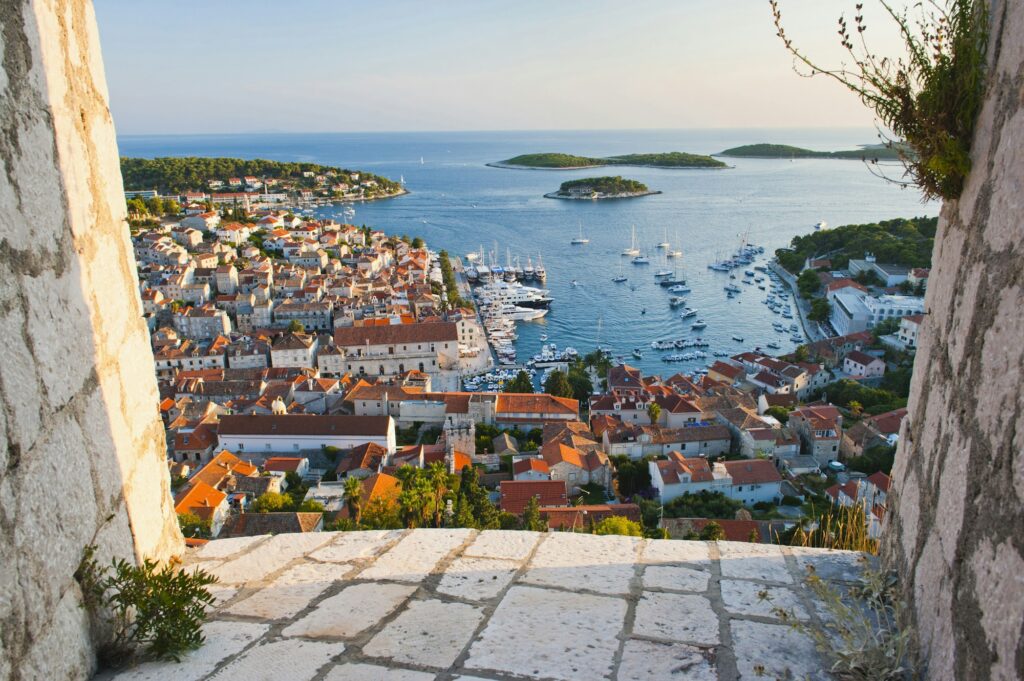
Head over Heels with Hvar in Croatia
Imagine bobbing on your back on azure waters, a heart-shaped island in sight, the sun kissing your face, your knapsack ashore. No, this is not a dream. Welcome to the paradisiacal island of Hvar in Croatia. Just warning you, be prepared for an intense love affair with the place. You’ve got plenty of time to court it in its entirety when going solo. Croatia, here thy solo traveler comes!

Live Your Own ‘Lost in Translation’ in Japan
Turn on your solo traveler alter-ego in Japan. Navigate through neon-glowing skyscrapers, ancient temples, sushi bars and experience a beautiful blend of traditional and modern. Harajuku’s hip streets, Tokyo’s tech-wonders, Kyoto’s serene temples or a walk under the cherry blossom trees, Japan covers all the bases of fascination. Plus, there is always an assurance of delicious sushi following you at every corner, because why not?
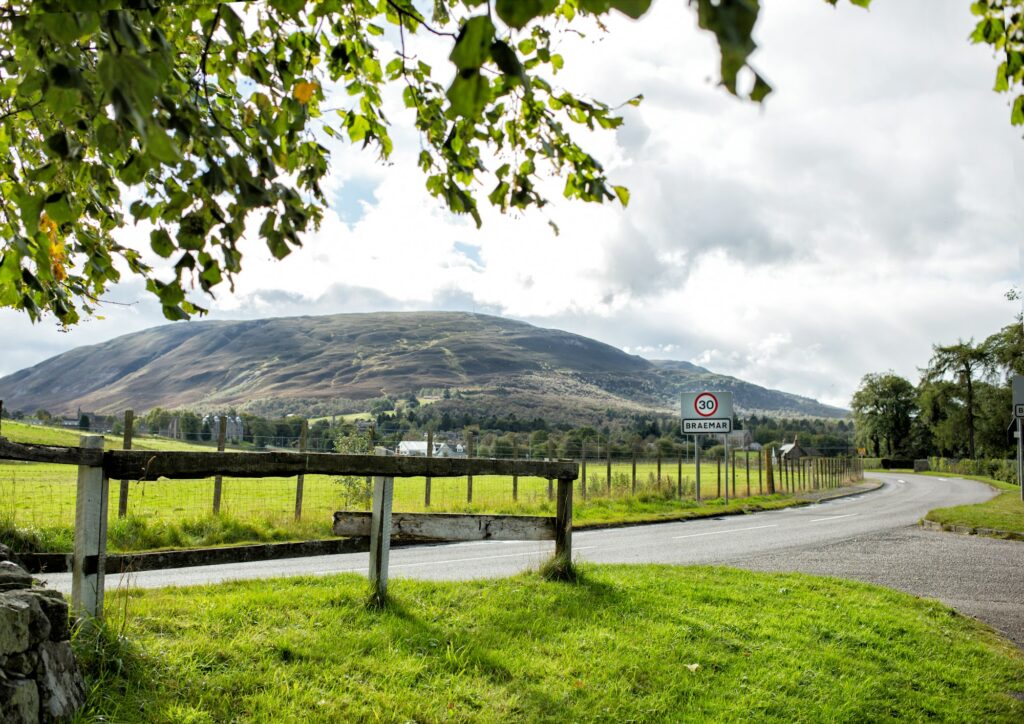
Get Spellbound in Scotland
Grab your coats, hitch the steam train ride through the highlands, and prepare yourself to be bedazzled within Scotland’s ancient castles. Watch out for the Loch Ness monster and the friendly local highlanders! A brush with Bad Guy plays in the background, Edinburgh’s stunning skyline in sight, and no one to interrupt your perfect International solo travel? Scotland is the place!

Explore Italy’s Charming Expanse
Pizza, pasta, Pisa! Ah, lovely Italy, with its beautiful canals in Venice, the ancient ruins in Rome, and the majestic Duomo di Milano. Sit solo at an alfresco café, gorge on decadent Tiramisu, and soak in La Dolce Vita! A lively Italian market visit followed by a wholesome pasta cooking class, that’s what Italian dreams are made of, and they are calling your name!
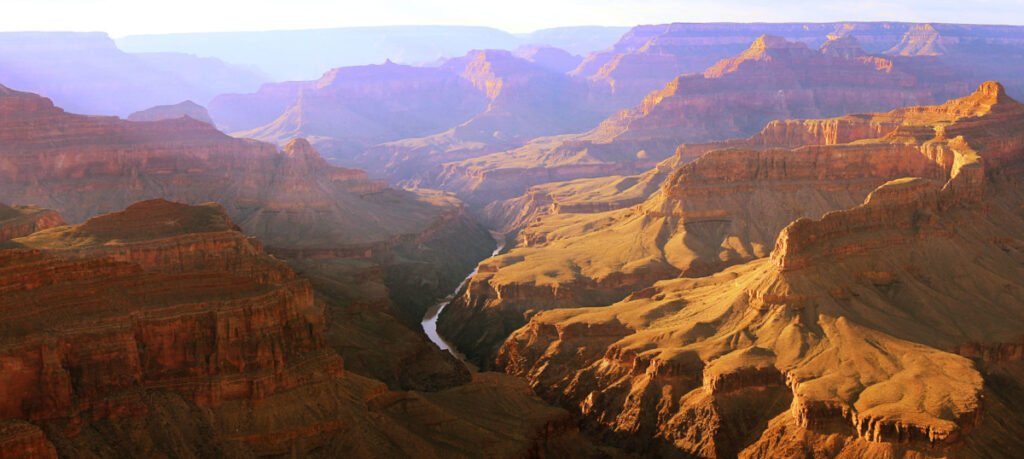
The OMG Effect of The Grand Canyon, USA
Stare at the Grand Canyon and try to comprehend its colossal beauty – well, good luck with that! Under the vast open sky, as you stand on the edge of this geological wonder, you will inevitably run out of ‘OMGs!’ Share the epic beauty and rapture of the Grand Canyon with just yourself. Experience the solo travel adventure in a reverential silence that even George Washington would approve!

Get Lost in Awe of Greece
Meander through a collage of white-blue dreamy landscapes, ancient Olympus ruins, and stunning Mediterranean beaches in Greece. Trust me, you will feel like you’re in a postcard! Get yourself lost in the alluring labyrinth of Santorini and meet the jaw-dropping Acropolis in Athens. The timeless allure of Greece makes it a must-have on your bucket list.
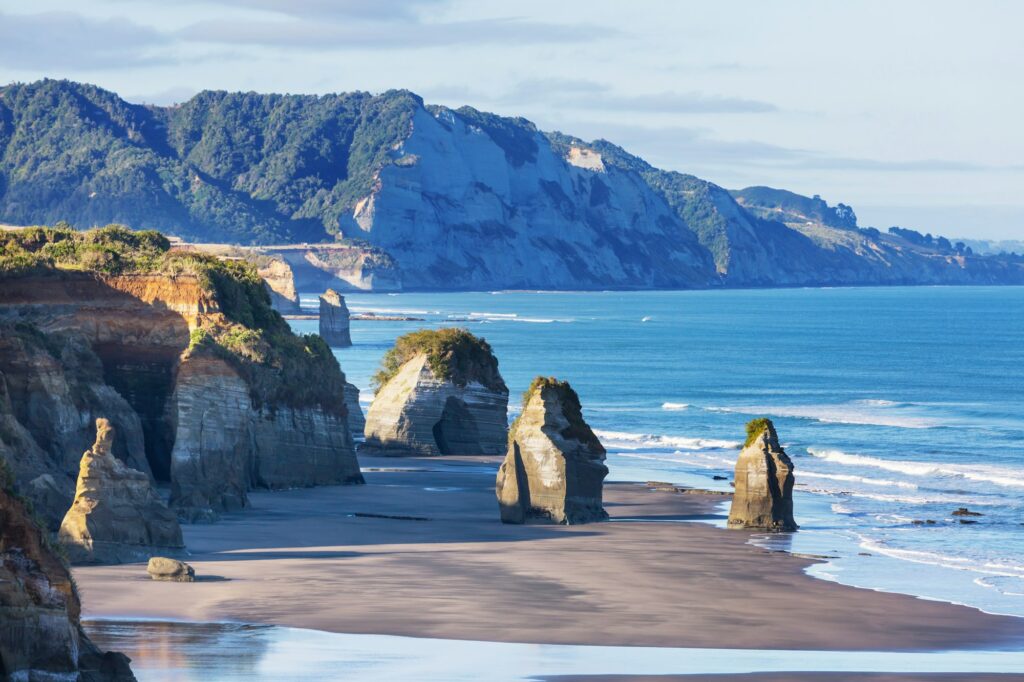
Tango with Mother Nature in New Zealand
The lush green fields kissing the cerulean sky at the horizon make New Zealand a visual spectacle. And yes, remember the ‘Hobbiton’? It’s here! Nature will tango with you here, the emerald lakes coaxing into scuba, the lofty peaks luring into trekking, and not to forget, a sneak into the Hobbits life. Fabulous!
So folks, gear up to scribble down this epic solo travel bucket list, and let’s have a hands-on-hips, world-at-my-feet walk into these stunning destinations!
10 Must-Do Local Gems in Barcelona Beyond Tourist Trails
Explore the vibrant Gracia neighborhood, visit the local markets, and indulge in a traditional vermouth experience. Head to the picturesque Parc del Laberint d’Horta and enjoy a picnic. Embrace the local beach culture at the lesser-known Bogatell Beach and take a dip in the Mediterranean. Wander through the charming streets of El Born and discover hidden gems. Join the locals for a sunset drink at a rooftop bar with stunning city views.
Attend a live music or flamenco performance at an intimate venue. Experience authentic Catalan cuisine at neighborhood bodegas and family-run restaurants. Join a local cooking class to learn traditional recipes and culinary secrets. Explore the off-the-beaten-path art galleries and creative spaces in the Poblenou district. Take a leisurely bike ride along the scenic paths of Montjuic and enjoy panoramic views of the city and coastline. Barcelona is bursting with energy, culture, and a vibrant local scene that goes far beyond typical attractions. Discover a myriad of experiences cherished by locals.
Hidden treasures await in Barcelona. From exploring hidden alleys to savoring authentic tapas, immerse yourself in this vibrant city and avoid the tourist crowds. Uncover secret spots that offer glimpses into local culture and unique experiences.
Explore the Gracia neighborhood, where narrow alleys and vibrant squares offer a glimpse into local life. Visit the Mercat de Sant Antoni, a local market brimming with fresh produce and vintage treasures. For panoramic views, head to the Bunkers del Carmel, a favorite picnic spot among locals. Montjuic hill offers tranquility away from the hustle, with its castle, gardens, and mesmerizing fountain show.
Wander through El Born’s labyrinthine streets and indulge in tapas at local bars. The multicultural Raval district features diverse flavors and art, while Parc de la Ciutadella is perfect for relaxation. Don’t miss the stunning Hospital de Sant Pau, often overshadowed but equally impressive. Join locals for a glass of vermouth at a local bar and escape to the tranquil beaches of Poblenou for a peaceful day by the sea.
Discover architectural marvels off the radar in Barcelona. While Gaudí’s Sagrada Familia is iconic, lesser-known works like Casa Vicens reveal his early creativity, while Colònia Güell showcases his vision for a utopian community.
Barcelona is rich in history, and places like Hospital de Sant Pau and Palau de la Música Catalana reflect its architectural beauty. These hidden gems reveal the city’s artistic soul.
Immerse yourself in Barcelona’s culinary scene by seeking out family-owned tapas bars that offer authentic experiences with homemade dishes. Enjoy traditional Catalan cuisine featuring fresh ingredients and local wines.
Explore artistic alleys where creativity thrives. Visit artisan markets filled with unique handmade crafts or discover vibrant street art that tells stories of local life. Hidden galleries showcase contemporary artists and provide intimate settings to appreciate their work.
Tranquil green spaces offer serene escapes from the city’s bustle. Secret gardens like Jardins de Rubió i Lluch provide perfect spots for relaxation, while peaceful parks such as Parc de la Ciutadella are ideal for picnics.
Experience cultural festivities through neighborhood fiestas that celebrate local traditions and Catalan heritage. Intimate flamenco shows provide a passionate insight into local music and dance, while underground clubs reveal eclectic sounds in Barcelona’s nightlife.
Local shopping experiences reveal boutique stores featuring exquisite craftsmanship and specialty shops for unique souvenirs. Visit historic libraries and bookshops to immerse yourself in Barcelona’s literary culture.
Coastal escapes await just outside the city. Discover quiet beaches like Platja de la Mar Bella for relaxation away from crowds or explore picturesque fishing villages such as Calella de Palafrugell and Sitges for charming atmospheres.
To navigate like a local, explore neighborhoods like Poblenou for an authentic experience or discover where locals gather in El Raval or Gràcia. Embrace unique experiences off the beaten path to create unforgettable memories in Barcelona.
